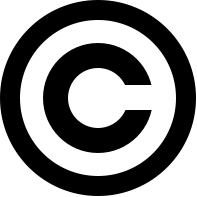Technical Writing – How to Comply With Moral and Ethical Standards in Technical Documentation
© Ugur Akinci
Technical writing has a number of moral and ethical standards that a professional technical writer needs to comply with. Violate them at your own peril, by risking the sudden demise of your career. Here are some of these issues…
Plagiarism – Needless to say, copying and pasting other people’s work as yours is a reprehensible criminal act. It’s theft. You just don’t do it. Period. There are no “if”s or “but”s about that one.
“Fair Use” and Quoting sources – However, this does not mean that you can not quote from other peoples’ work within the bounds of “fair use.” Done properly, quoting others actually acknowledges and honors the good work done by one’s colleagues.
And this is how to do it properly:
1) Quote only up to 200-250 words.
2) Use quotation marks in the beginning and end of the quotation.
3) After the quote, give full credit to the author, together with exact citation of the source. For online sources, an HTML link to the source is also a must.
If you cannot remember or locate the exact words, you can always paraphrase a source by explicitly stating that you are paraphrasing him or her.
 Observe the Intellectual Property Rights of creators. Don’t forget: as a technical writer, you are a creator yourself. (Public domain illustration courtesy of Wikipedia Commons)
Observe the Intellectual Property Rights of creators. Don’t forget: as a technical writer, you are a creator yourself. (Public domain illustration courtesy of Wikipedia Commons)
Copyrights – Be very careful about using copyrighted texts, images and multi-media files. Either get the permission from the copyright holder or pay for it before use.
Another alternative is to use non-copyrighted materials that are in “public domain” for one reason or another. You can for example search Wikipedia for such copyright-free public domain images. For example, all the images that you see in my Website Articles articles are either Wikipedia Commons Public Domain images or those that I created myself for the Website Articles readers. I always try to document the copyright status of the images I use inside my articles. I recommend you do the same.
A PERSONAL SIDEBAR: I have a mother who is a painter and a cousin who is a professional photographer. So I know what images and “intellectual property rights” mean to them. Thus I try to respect those rights myself in my own technical writing career.
Release Forms – If you are dealing with artists and photographers, it would help to have them sign a “Release Form” to the effect that, when you use their material the way you agreed upon, they will not press for any rights that are not spelled out in the Release Form. It is best to have such forms prepared or looked over by your attorney, just to be on the safe side.
LAST WORD: We’re all human. Mistakes and inadvertent errors do occur from time to time. When alerted, take immediate corrective action and explain the situation to the copyright holder(s). If you are open and honest about your mistakes, you’ll discover that most people are very understanding and forgiving about the affair.
